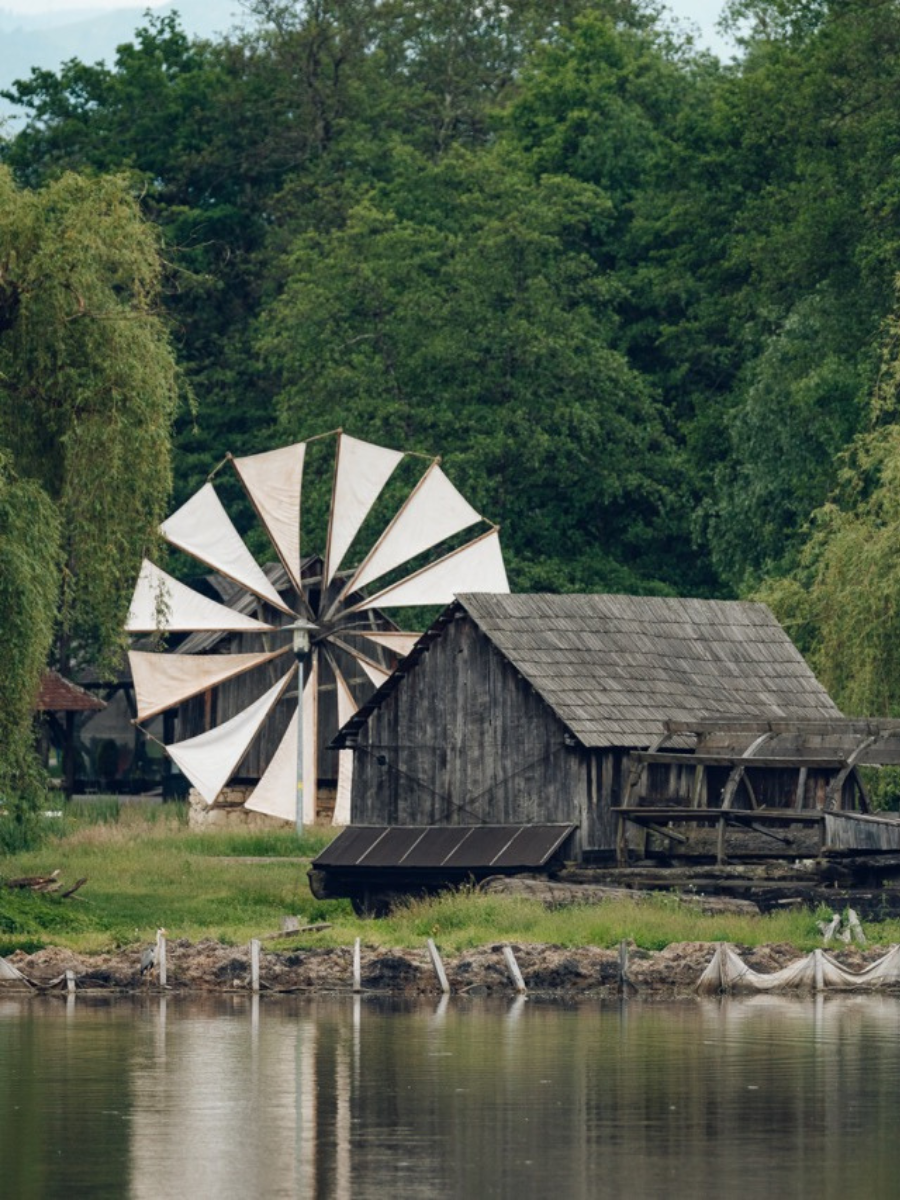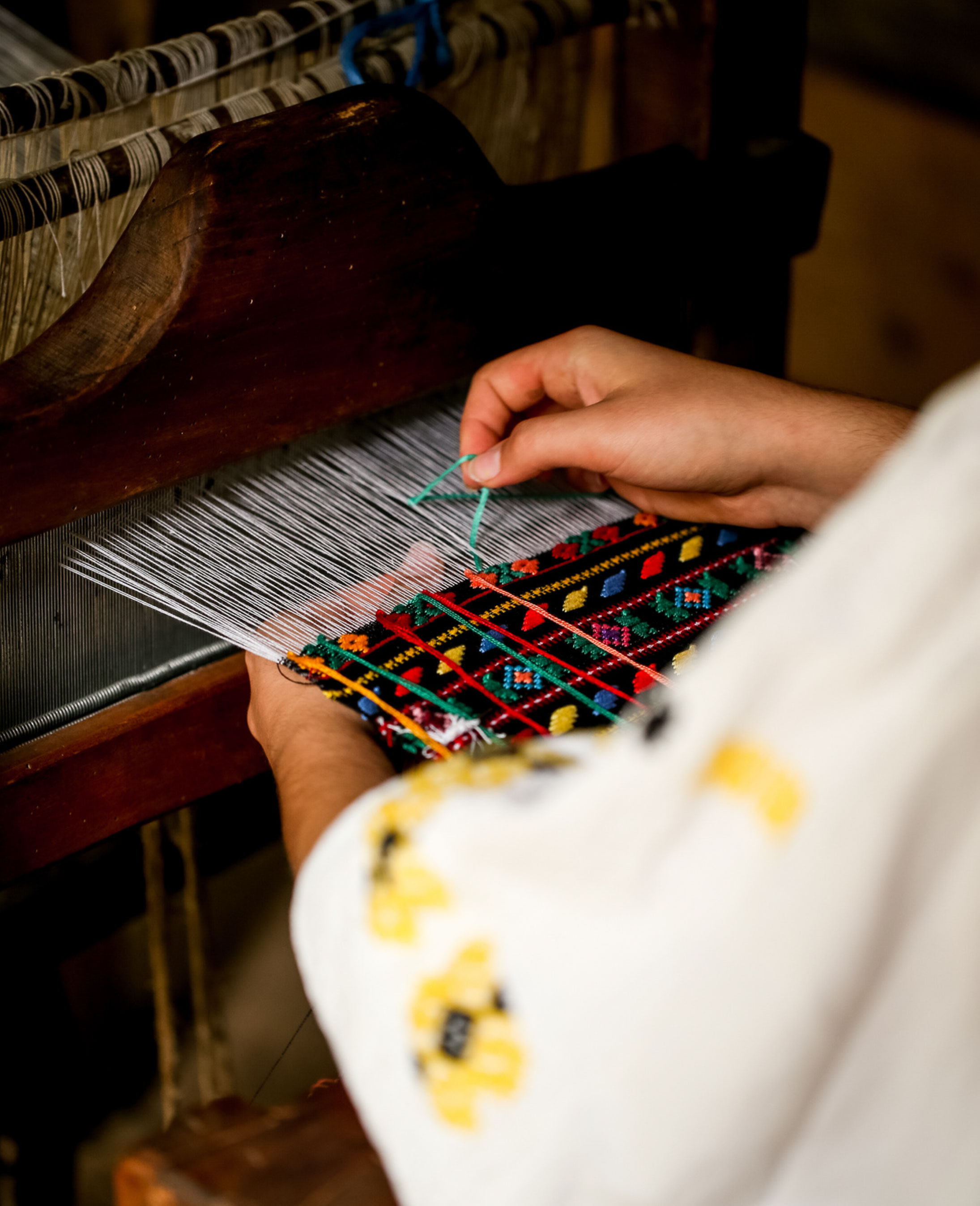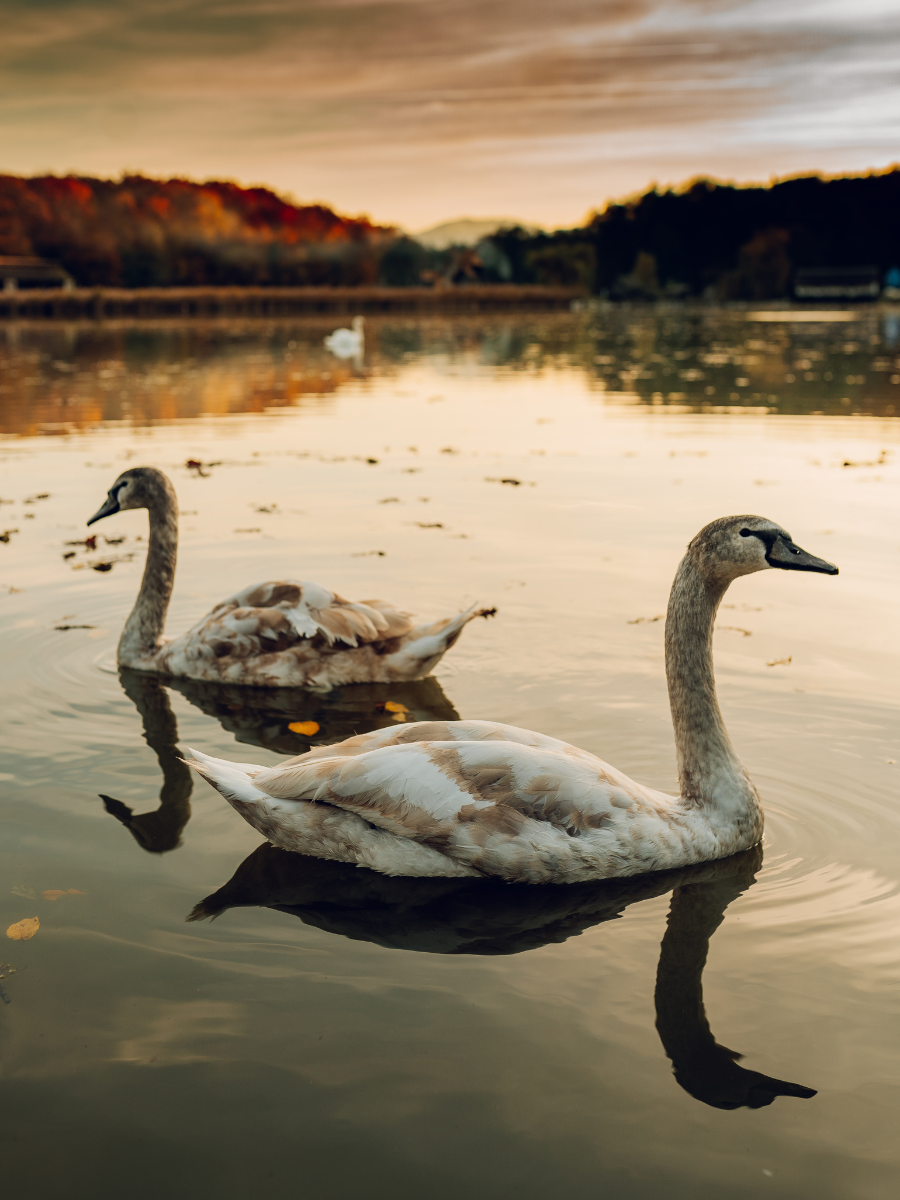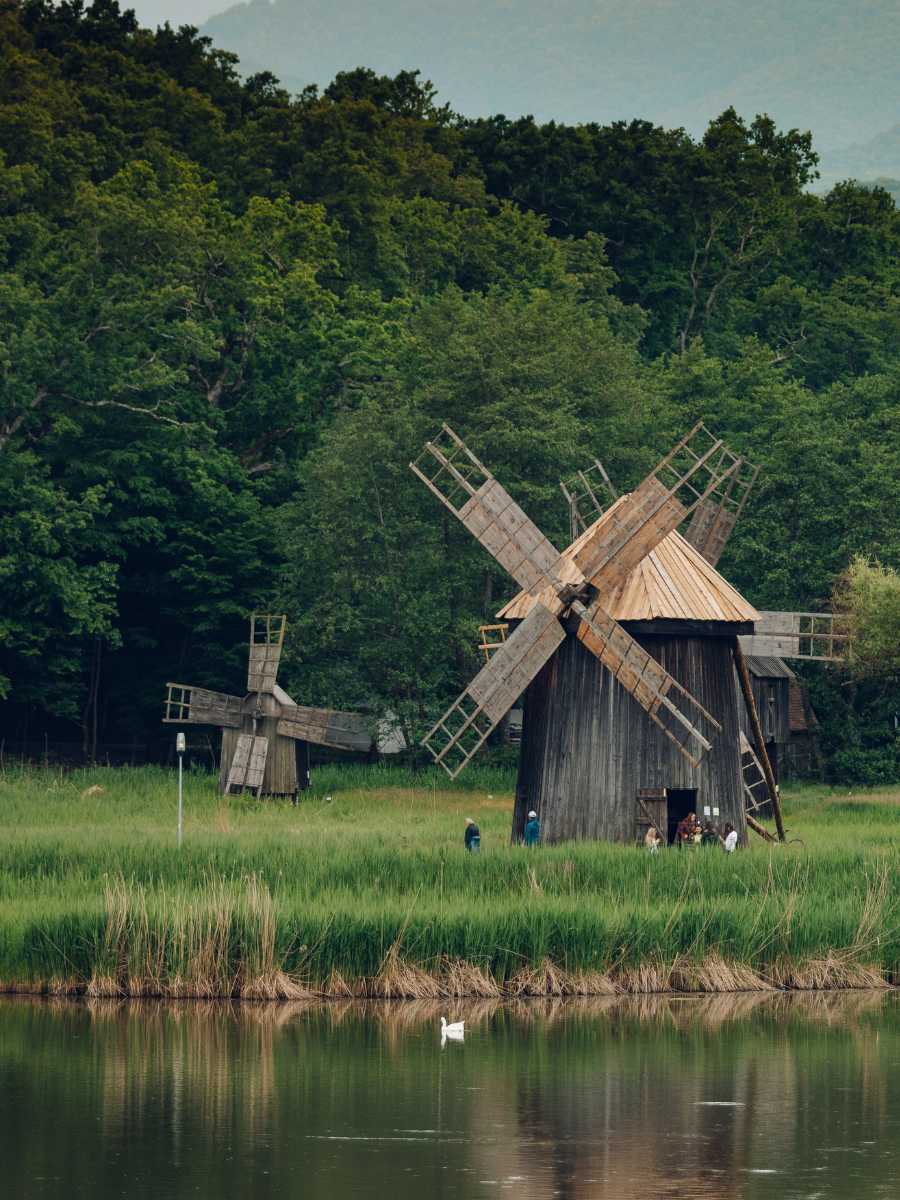ABOUT US
For more than 100 years, ASTRA Museum's mission has been to connect audiences with traditional values by continuously adapting to the cultural needs of society.
Who we are
The most important ethnomuseum institution in Romania. The largest open-air museum in Europe. Set in an enchanting landscape, in the protected forest area of "Dumbrava Sibiului", the Open air Museum surprises you at every step, at every moment, through the way in which nature and culture blend harmoniously in a true Romanian village. The 10 km of alleys will take you through peasant households, handicraft workshops, wooden churches, wayside shrines, sheepfolds, water and windmills, and the well-preserved original interiors will tell you about simple country life, teach you about old skills and how you can find new ways to reuse them for the future.
In a continuous development and adaptation to new challenges ASTRA Museum builds projects relevant to the community and uses modern means of communicating heritage to the public. These efforts are recognized at national and European level through awards granted over time and appreciated by visitors according to surveys conducted by various tourism platforms.
2017 - Special Jury Mention for the National Olympiad of Traditional Artistic Crafts within the European Union Awards for Cultural Heritage / Europa Nostra Awards 2017.
2019 - European Museum Academy Awards, Luigi Micheletti Award for Innovative Museum of the Year
2020 - Order of Cultural Merit in the rank of Knight, Category E - National Cultural Heritage, an important and honourable distinction awarded by the President of Romania, H.E. Mr. Klaus Johannis, for outstanding merits in the national and international cultural landscape.
2021 - 3* Michelin in the Michelin Anniversary Guide ,,Romania 500 landscapes, destinations and experiences"; rated for the second consecutive time with three stars.
2021 and 2022 - Tripadvisor traveler's choice. Reviews from millions of travellers on Tripadvisor place this attraction in the top 10% worldwide.
2022 - BIG SEE Tourism Design Award - in the category Creative Story and Identity as Experience for the project ASTRA VR - Use of state-of-the-art multimedia technology in the accessibility of the ethnographic heritage of ASTRA Museum funded by MFSEE in the framework of the RO-CULTURA programme, CALL for Support to innovative exhibitions with restored mobile cultural goods
2023 - Special Jury Prize in the category "Cultural and Educational Destinations" awarded at the 2023 Destination of the Year Gala in Iasi.
our projects
C.A.R.R.
Restoration and revitalization of the historical monument Casa de Artelor - Centre for regional activities and resources (CALL03-13), funded by EEA Grants 2014 - 2021 under the RO-CULTURA programme, CALL Restoration and revitalization of historical monuments.
The project addresses a new cultural business model through which ASTRA Museum aims to transform Casa de Artelor into a creative hub, a nodal point where crafts (past, present, future) become the focal point of all activities to enhance the value of this historical monument.
The project implementation period is 1 October 2020 - 31 March 2024.
Astra VR
The use of state-of-the-art multimedia technology in the accessibility of the ethnographic heritage of the ASTRA Museum (CALL01-3), funded by EEA Grants 2014 - 2021 under the RO-CULTURE Programme, CALL Supporting innovative exhibitions with restored mobile cultural goods.
The project proposes innovative methods of heritage enhancement, combining the use of state-of-the-art multimedia technology with the development of new activities by involving museum specialists, craftsmen and local producers, and aims to reconvert a static area of the open-air museum using multimodal storytelling and participatory experiences mediated by local rural communities.
This project was awarded the 2022 BIG SEE Tourism Design Award in Ljubljana, Slovenia in the category Creative Storytelling and Identity as Experience .
Brief history
Continuator of the Transylvanian Association for Romanian Literature and the Culture of the Romanian People (ASTRA), the ASTRA Museum carries on the material and spiritual legacy left by the promoters and founders of the open-air museum, preserving the visionary and innovative character of its development strategy.
The story of the ASTRA Museum begins more than a century ago, with the first manifestations of a dream of the Romanians from Transylvania to organize an ethnographic collection in Sibiu, under the aegis of ASTRA. Its purpose was to highlight the most representative testimonies about the Romanian specificity, about what differentiated us from other peoples, things and phenomena that could explain to everyone who we are.
The Transylvanian Association for Romanian Literature and the Culture of the Romanian People was founded in 1861 and had the mission and the initiative to organize the first public exhibitions in the Transylvanian towns with the "products" of the textile cottage industry and peasant crafts, in order to promote the national industry.
The thematic design of the ethnographic exhibition of the open-air museum was presented in 1905 in the Association Museum, which operated in the building located in the central park of Sibiu, ASTRA Park (today the building belongs to the ASTRA Library).
In 1950 the Museum of the Association was closed and its collections were stored in the Brukenthal Museum Palace, and in 1956, at the initiative of Cornel Irimie, a Folk Art Section was created with the aim of showcasing these collections and rekindling the idea of creating the largest open-air ethnographic museum in Romania, as imagined by the promoters of this project.
In 1960 the land in Dumbrava Sibiului was transferred from the City Hall, and in 1962 the Ministry of Education and Culture approved the profile of museum of handicrafts and folk industries, and in 1963 work began on the installation of the Museum of Folk Technology to house the permanent outdoor exhibition. The Museum of Folk Technology (officially opened to the general public on October 17, 1967) has become a national and international landmark due to the uniqueness of its thematic profile, the originality of its organizational concept, the grandiose nature of the museum, both in terms of surface area and heritage, and its national representation.
Through the successive transfer of numerous households, the exhibition of folk technique installations was enriched with elements that represent and complete the life of the Romanian village. Thus, the museum in Dumbrava Sibiului becomes a museum of occupations and crafts, of transport, habitation and way of life, of spiritual, secular and religious life, of artistic culture, a museum of traditional folk civilization.
In 1990, consent was received from the Ministry of Culture and the ASTRA Association for the attribution of the cognomen ASTRA, and the Museum of Popular Technology became the Museum of Traditional Folk Civilization ASTRA. In this way, the direct filiation and the patrimonial and programmatic continuity between the Museum of the Association and the ASTRA Museum was recognized.
In 2001, the Museum became an institution with a complex organizational structure that manages a diverse tangible and intangible heritage consisting of the collection of the Open Air Museum, the collection of the Museum of Transylvanian Civilization, the Emil Sigerus Collection of Saxon Ethnography, the Franz Binder Collection of Universal Ethnography, and as a result became the ASTRA National Museum Complex.
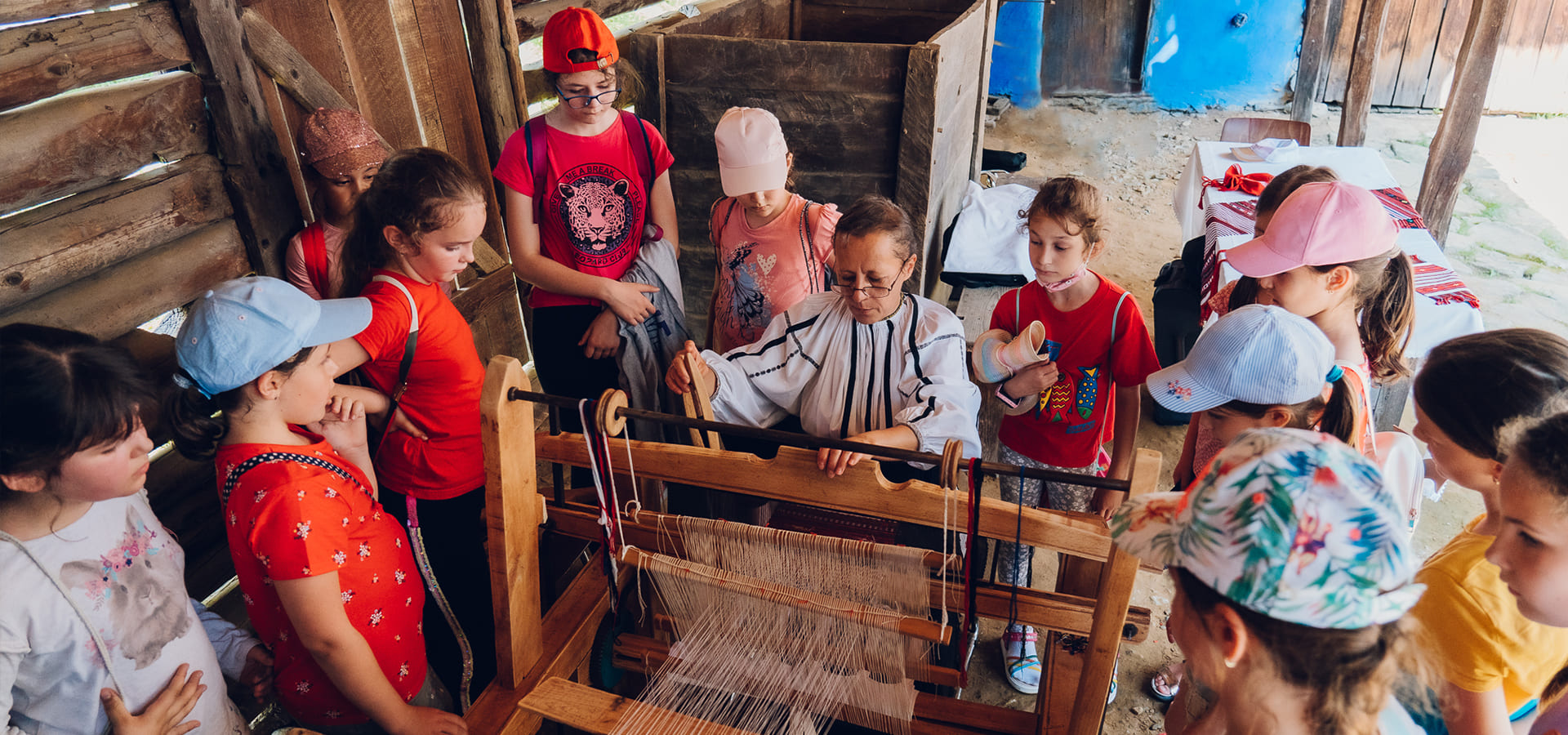


Our family
ASTRA Museum presents itself today as a modern cultural institution that responds to the needs of the community and society through its actions of education and training, relaxation and entertainment, protection and communication of national heritage and as a visionary institution by formulating strategies and policies for sustainable development in the cultural sector.
The Open Air Museum
An ideal place for preserving the authentic Romanian spirit, the Open Air Museum is located in a true paradise, in the protected forest area of "Dumbrava Sibiului". A simple walk through the 96 hectares reveals to visitors a picture of rural life throughout our country, materially manifested in over 400 houses, outbuildings and technical installations.
indoor museums
Continuing and preserving the heritage and values of the Museum of the Association, the ASTRA Museum of Transylvanian Civilization, an integral part of the ASTRA Museum, brings to its visitors the traditional world of the enchanting multi-ethnic Transylvania.
astra centre for heritage
With its facilities, the ASTRA Centre for Heritage addresses the issue of conservation and restoration on all types of materials, based on solid theoretical and practical knowledge. Saving heritage requires dedication, understanding, knowledge and perseverance in the process of conservation-restoration of objects and monuments on which time has left the mark of physical, chemical and biological degradation.
Astra Film
Founded in 1993 as an innovative project of the ASTRA National Museum Complex, the ASTRA Film Festival has become one of the main platforms for documentary film in Romania and Europe. The longest running film festival in Romania, it surprises every time with controversial, topical subjects and unique locations for viewing. The festival offers filmmakers from Romania and around the world the best place to premiere their documentary films.
Transylvania Journal
Transylvania is an academic journal founded in 1868, which publishes studies and reviews on a variety of subjects in the fields of literary studies, theory and critical thinking, socio-economic sciences, philosophy, political science and theology. From 2017 the Transylvania journal has been published by the ASTRA National Museum Complex under the ASTRA Museum publishing house.
Marketing and Education
A museum that responds to the challenges and needs of the 21st century puts the cultural marketing and education department on an equal level with other departments. Cultural marketing, educational programmes, communication and heritage interpretation are the activities that have placed ASTRA Museum on the map of important museums in Europe. We address, through our package of activities, also the private sector, with a rich offer for team-building and events dedicated to the corporate sector.
EVENTS GALLERY
An ideal place for preserving the authentic Romanian spirit, the Open Air Museum is located in a true paradise, in the "Dumbrava Sibiului" nature reserve.
A COMMON MISSION
Although its profile is ethnographic, the mission of the ASTRA Museum transcends the exclusive promotion of the traditional in the past, becoming a true cultural instigator through its location at the confluence of old and new, traditional and modern, national and global. To remain relevant to its audience, ASTRA Museum invests in programmes aimed at enhancing the cultural life of the community and encouraging people to make tradition an active part of their daily lives. ASTRA Museum's central objective is to be a benchmark of best practice among Romanian and international cultural institutions.


